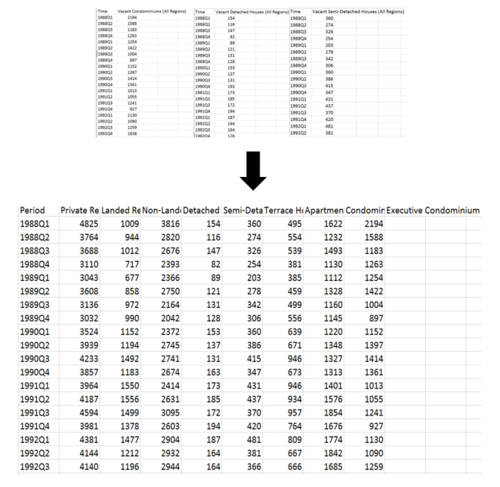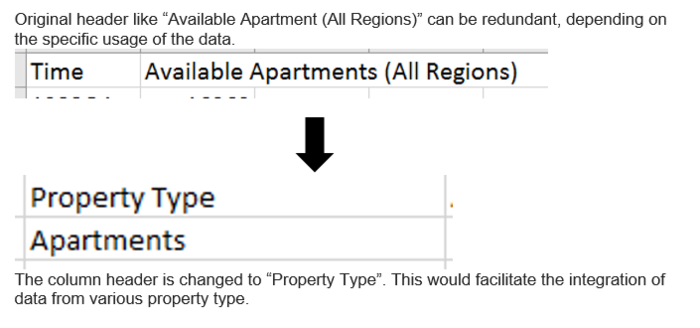IS428 2016-17 Term1 Assign1 Tan Kee Hock
Contents
Abstract
Problem and Motivation
Singapore is a small island nation, limited to some 710 sq km of land. As the country continue to grow, there will be an inevitable greater demands on the limited land resource. This scarce land resource is used not just to host its businesses and industries but also all its other needs – utilities, homes, schools and defence. As Singapore continues to strive to be a global city in the heart of Asia, she must learn to support its aspirations while ensuring the needs of its citizen are well served. Nevertheless, Singapore has never viewed its limited land area as a handicap. Instead, it provides a strong impetus for all of us to craft strategic policies which focuses on sustainable development.
One of the key struggles for managing Singapore’s limited land resource was housing. How much of land should be allocated for housing to ensure Singapore can continue to sustain its growth? Although public housings are home to 80% of Singapore’s resident population, there had been a significant movement from public housing to private housing. As Singapore grows to be more affluent, more and more of its residents are moving over to private housing. Private housing not just serve Singaporeans but also other Singapore residents as well.
[Introduction on Private Property]
The key objective of this report is to investigate the if the supply of private residential property market is adequate to serve the needs of in Singapore and if the prices of these properties are stable. I will define the problem with a questions to help facilitate the analytical process:
- “Are there private residential properties sufficient to serve the needs of Singapore and its resident?”
- “How are the prices behaving?”
In this report, we will look at the problems within current private residential properties market and determine how we can better manage it. From the data in 2015, we would then propose new private residential housing policies to better manage the market. In light of the problem statement, we will focus our analysis in these two sub-areas:
- Share of the private residential properties supply in 2015
- Distribution of the private residential properties prices in 2015
The report along with the infographic is designed for examination by relevant housing authorities. The readers are expected to be professionals who are in position to shape the next private housing policies. It consists of compiled statistics put together to highlight the key developments within the private residential market.
Methodology
In general, start with the big picture and spot abnormalities. Subsequently focus on the finer details of the data.
-
Share of the private residential properties supply in 2015
- Breakdown of the available property type within the private residential properties supply. Determine the composition of private residential properties supply. Further analysis will be focused on the more popular property type (Landed vs Non-Landed).
- Analyse the vacancy of the more popular property type (Landed/Non-Landed), across time. Determine the period which over supply occurs.
- Based on the more popular property type, compare the vacancy of each sub-property type across time. Determine which sub-property type is losing demand.
-
Distribution of the private residential properties prices in 2015
- Overview of the price indexes of the 2 main property type (Landed/Non-Landed). Determine the behaviour/relationship between the property type, compared across time
- Based on the more popular property type (Landed vs Non-Landed), analyse the average price behaviour across region. Determine the which region which the highest average transaction sale occur (Transactional volume).
- Investigate the volatility of the prices of the more popular property type (Landed /Non-Landed). Determine which region has the most volatile transactional price.
Share of the private residential properties supply in 2015
To understand how the supply of private residential properties is like in 2015, we will be looking the 3 main components.
- The distribution of private residential units by property type
- The new private residential units compared across time
- The vacancy rate of various private residential property type across time
To help in investigating the above components of the private properties supply, we will need to rely extensively on 4 main variables.
- Property Type
- Time
- Available Units
- Vacant Units
Distribution of the private residential properties prices in 2015
To understand what the distribution of the private residential properties prices is like in 2015, we will be looking the 3 main components.
- Private Index of private residential units across time
- The average transactional prices of popular residential type compared across time and region
- The volatility of transactional prices among the popular residential type against time and region
To help in investigating the above components of the private residential properties prices, we will need to rely extensively on 4 main variables.
- Property Type
- Price Index
- Transactional Price
- Region
Data Cleaning
There are several concerns with regards to the original data provided by REALIS
- Raw data retrieved from REALIS is not “user-friendly” as it does not allow other data from other excel files to be integrated together.
- There are redundant data which provides extra explanation for the data downloaded.
- The column headers can be too verbose.
- Data is compiled into multiple excel files when downloading from REALIS

